Have you ever been to a play? When the audience comes to see the show, they see the actors and actresses perform. What they don’t see are the many crew members who work backstage on lighting and sound and sets. These people don’t get to take a bow at the end of the show, but they are very important to the success of the play.
In the hospital, the medical technologists are like crew members in a play. Patients don’t often see them, but they are vital members of the healthcare team.
Medical technologists (also known as clinical laboratory scientists) are professionals who work in the hospital laboratory, performing a wide range of tests. Doctors make many of their decisions about diagnosis and treatment of disease based on laboratory test results. It is the responsibility of the medical technologist to provide accurate and precise data. Because they may hold life and death in their hands, the medical technologist must know when results are incorrect and need to be rechecked.
Medical technologists do everything from simple pregnancy tests, to monitoring antibiotic drug therapy, to complex testing that uncovers disease like diabetes, AIDS, and cancer. They do all this testing by operating microscopes, complex electronic equipment, computers, and precision instruments costing millions of dollars.
To be a medical technologist, a person must earn a degree from a four-year university. Then, a medical technologist can work in:
- Hospitals
- Clinics
- Industrial and research labs
- Sales, service or technical development for companies that make medical supplies
Or, because medical technologists are highly educated people, they can often go on to medical school or pursue other health-related occupations.
Today, there is a shortage of qualified people to fill all of the jobs available for medical technologists, which means those studying medical technology will have no problem finding a place to begin their careers.
Successful medical technologists have:
- A strong interest and ability in science
- Patience
- Reliability and mature judgement
- Ability to function under pressure
- A desire to help others
- Interest in problem solving
- An industrious work ethic
Medical technologists work in six main areas of the hospital laboratory: chemistry, blood banking, hematology, coagulation, urinalysis and microbiology.
Chemistry
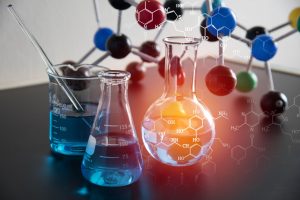
In chemistry, a medical technologist measures many different proteins and electrolytes, as well as drug levels used to monitor patient therapy. A medical technologist working in the chemistry department will tell the doctor many things. For example, how much sugar is in the patient’s blood, how much protein is in the patient’s urine, or whether or not the patient has a tumor. Much of the testing in chemistry is done on automated analyzers. Chemistry is possibly the largest and most rapidly changing area of the laboratory because of the variety of automation available. Methods used in chemistry include things like electrophoresis, spectrophotometry, nephelometry, immunoassays and electrochemistry. Sound complicated? It’s a mouthful, but that’s why medical technologists have to be educated!
Blood Banking
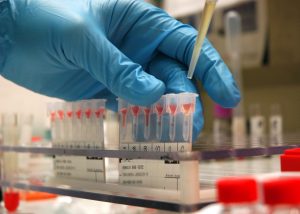
A medical technologist in blood banks must be especially accurate and organized. Blood bankers type blood and match it to donor units of blood for transfusions. A mistake in blood bank can be very dangerous, because if a medical technologist gives the wrong type of donor blood, it can be fatal.
Everyone has different antibodies in their blood, which can react against blood types other than their own. Most people are type O. Other blood types include A, B and AB. In addition to ABO types, everyone has an Rh typing. You can be either Rh positive or Rh negative. Rh types are important in transfusions as well as pregnancy. An Rh positive baby may become sick or even die if the mother is Rh negative. The medical technologist plays an important role in preventing these problems. The technologist can type the mother and determine if she needs a drug known as Rhogam, which can prevent the problems with the baby.
Urinalysis
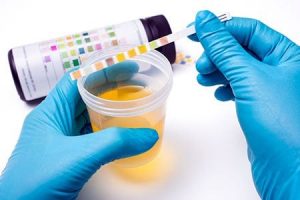
One of the oldest diagnostic procedures in the laboratory is the analysis of urine. Urine is considered to be a fluid made of the waste materials of the blood. Urine is made in the kidneys, stored in the bladder, and excreted by way of the urethra. An adult’s kidney can filter over one liter of blood every minute. Most of this is returned to the circulation, and only one liter of urine is made in the course of a whole day. Tests of urine can determine a lot of things about the health status of an individual. Electrolyte imbalance, kidney damage, urinary tract infection and diabetes are just a few of the problems that can be found in urinalysis.
A medical technologist in urinalysis looks at the physical properties of the urine, such as color and clarity. They also look at the chemical composition of the urine. This usually involves tests for blood, protein, glucose, and white blood cells. Finally, the technologist looks at the urine under a microscope and looks for crystals, bacteria, and blood cells that are not supposed to be in the urine.
Hematology and Coagulation
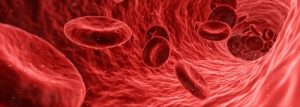
Hematology is the study of blood. The medical technologist in hematology looks at blood under a microscope and tells the doctor what type of white blood cells are present and in what numbers. They also use a cell counter, which is a big instrument that will count the cells for the technologist and can even tell the different types apart. All of the tests done on the cell counter are known as the Complete Blood Count (CBC). The technologist also measures how much of the blood is red blood cells versus plasma (the fluid part of the blood). This test is called a Hematocrit. Technologists measure how much hemoglobin is present in the blood, too. Remember hemoglobin is very important in the making of red blood cells. A very important part of hematology is determining if the components of the patient’s blood are in the correct proportions. This means that there should be mostly red blood cells and fewer white blood cells. The white blood cells present in the blood are counted and differentiated. This means counting the different types of white blood cells. The different types of white blood cells are also usually present in certain proportions. The medical technologist must determine if the red cells and white cells have the right shape and color as well.
Coagulation studies the patient’s hemostasis. Hemostasis is the stopping of blood flow from an injured blood vessel. The process of hemostasis is very complicated and not fully understood, but medical technologists can measure how long it takes for blood to clot to determine if the patient’s system is operating properly. Hemostasis involves many small proteins known as clotting factors. The technologist can determine which factors are not working in the hemostasis system. The absence of just one factor can stop the blood from clotting. The two main tests done in coagulation are the Protime and the Activated Prothrombin Time. Both measure how long it takes for the blood to clot, but are measuring different factors.
Patients are often given drugs called anticoagulants to prevent unnecessary clots in the blood. The technologist helps the doctor determine how much of the medicine should be given to the patient by doing the Protime and Activated Prothrombin Time tests.
Microbiology
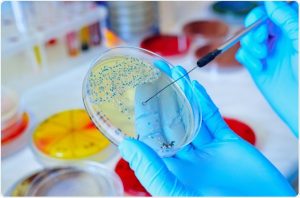
The medical technologist’s main concern in microbiology is bacteria. There are many different types of bacteria that cause infections. It is the technologist’s job to determine what type of bacteria are causing the problem in the patient and what type of antibiotics will work best against the “bugs”. The technologist also looks for fungi and parasites.
Infections can happen just about anywhere in the body. This means that the technologist in microbiology must deal with many different types of specimens. The technologist takes the specimen and puts it onto plates filled with nutrients for the bacteria and fungi to grow on. This is called culturing. They then look at what grows and use the physical appearance of the growth and different chemical tests to determine what type of organism is growing. Technologists will also look at the growth under a microscope to see what type of bacteria is present. The different types of cultures done at most hospital labs include urine, stool, blood, and sputum.
Everyone has bacteria that are normally present in stool, sputum and on the skin that can also grow in cultures. The medical technologist must be able to determine which organisms on the plates are causing disease and which are just part of the normal flora. (Flora means the microorganisms that normally grow on the body to compete with disease causing organisms and prevent the disease causers from growing.